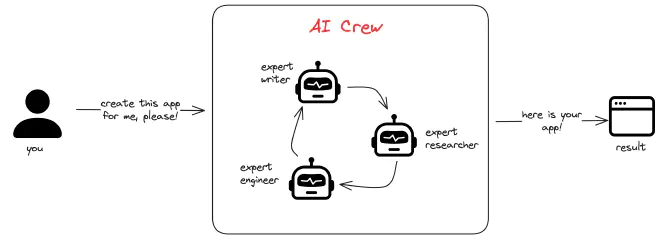Wireless earbuds have come a long way in the last few years. Google’s Pixel Buds 2a Gone are the days when choosing a pair meant compromising heavily on sound quality, battery life, or style. Today, you can pick up earbuds that look sleek, sound great, and even cancel noise impressively. And, thanks to competition, most of them are reasonably affordable. But despite all these improvements, there’s still one glaring weakness in the world of wireless earbuds: modularity and repairability.
Rread More: MAGA Billionaire Endorses AI-Driven School Model, Sidelines DEI
The Hidden Problem with Modern Wireless Earbuds
Apple’s AirPods, for example, are an excellent product in almost every sense. The design is iconic, the connectivity is seamless, and the performance is reliable. Yet there’s one flaw that’s hard to ignore: the battery is non-replaceable.
Once the battery in your AirPods or AirPods case dies—which usually happens after a couple of years—you’re essentially forced to buy a whole new set. Sure, you can get a battery replacement service from Apple, but it’s expensive and inconvenient. For many users, that means a perfectly functional pair of earbuds gets thrown away simply because one tiny component has failed.
And this isn’t just an Apple problem. Most wireless earbuds on the market follow the same disposable model. While technology has improved dramatically in terms of audio fidelity and design, longevity hasn’t kept pace. That’s why when Google unveiled the Pixel Buds 2a at its recent hardware event, it felt like a breath of fresh air.
Pixel Buds 2a: Incremental Upgrade, Major Lifespan Win
At first glance, the Pixel Buds 2a might not seem revolutionary. They aren’t reimagining wireless audio, and the headline feature—active noise cancellation is now almost expected in earbuds in this price range. But one small feature sets them apart in a huge way: the replaceable battery in the charging case.
A Battery You Can Actually Replace
Here’s how it works: the bottom of the Pixel Buds 2a case features two small screws. Remove them with a Torx screwdriver, pop off the bottom of the case, and voilà—you have direct access to the battery.
This means that if the battery ever stops holding a charge, you don’t need to send the case to Google or buy an entirely new set of earbuds. Instead, you can order a replacement battery and swap it yourself. It’s a level of modularity and repairability almost unheard of in consumer earbuds.
According to Lifehacker, the exact cost of a replacement battery hasn’t been officially disclosed, but the mere fact that this is even an option is a big win for consumers and the environment.
Why This Matters
Batteries are often the first component in gadgets to degrade. Over time, even the most expensive and well-designed devices lose their longevity because their battery chemistry naturally declines. By making the battery in the Pixel Buds 2a case replaceable, Google has solved one of the biggest pain points in wireless audio: earbuds that die prematurely.
From a consumer perspective, this is huge. Instead of buying a new pair of earbuds every few years, you can simply replace one small component. That’s not just cost-effective it’s also better for the environment.
A Step Towards Sustainable Electronics
Think about it: millions of wireless earbuds are sold every year, and most of them will eventually end up in landfills. Often, the only thing wrong with them is the battery. By allowing at-home battery replacement, Google is taking a small but important step toward reducing electronic waste.
Sustainability in tech is a conversation that needs more attention. Modular devices those designed for easy repair and upgrade aren’t just a nice-to-have; they’re essential if we want to curb the environmental impact of consumer electronics.
The Limits of Pixel Buds 2a’s Modularity
Of course, it’s not perfect. The battery inside the earbuds themselves is still non-replaceable. If one of the buds dies, you’ll either need to hope it’s covered under warranty or replace the whole pair. In that sense, Google’s solution is only a partial fix.
But it’s a start—and an important one. For years, companies have treated small electronics like disposable gadgets. Apple, in particular, has built a reputation for sleek, sealed designs that prioritize aesthetics over longevity. Google’s decision to include a swappable battery in the Pixel Buds 2a case challenges that mindset.
It’s a small design choice with big implications. If Google continues down this path—or if other companies take note—we could see a new standard of repairable, sustainable personal audio devices in the near future.
Modularity: The Missing Feature in Consumer Electronics
Why has modularity been so rare in wireless earbuds? There are a few reasons:
- Design constraints – Earbuds are tiny, and fitting all the necessary components into a sleek form factor is challenging.
- Water resistance – Sealed designs make earbuds more resistant to sweat and rain, but also make repair harder.
- Planned obsolescence – Some companies have little incentive to design products meant to last longer than the typical upgrade cycle.
Despite these challenges, modularity isn’t impossible. Google’s Pixel Buds 2a demonstrates that thoughtful engineering can balance design, performance, and repairability.
How This Could Change the Industry
If other companies follow Google’s lead, we could see several positive trends emerge:
- Lower long-term costs for consumers – Instead of buying a new pair every two years, users could replace batteries or other worn-out components.
- Reduced environmental impact – Fewer gadgets in landfills mean less electronic waste, a major issue in today’s tech-driven world.
- More innovation in design – Companies may explore creative ways to make modular earbuds that still look sleek and perform well.
Imagine a future where your earbuds, smartwatch, or even smartphone could have swappable batteries, worn-out buttons replaced, or minor components upgraded without sending the entire device back to the manufacturer. It’s a world where gadgets are no longer disposable but truly sustainable.
Frequently Asked Questions (FAQs)
What makes the Pixel Buds 2a different from other wireless earbuds?
The Pixel Buds 2a feature a replaceable battery in the charging case, which is rare in modern earbuds. This allows users to swap out the battery themselves without replacing the entire device, improving longevity and reducing waste.
Can I replace the battery in the earbuds themselves?
No. Currently, only the charging case battery is user-replaceable. The batteries inside the earbuds themselves remain non-replaceable.
How do I replace the battery in the Pixel Buds 2a case?
At the bottom of the charging case, you’ll find two small screws. Using a Torx screwdriver, you can remove the screws, open the case, and replace the battery. No special tools or professional help are required.
Do I need to send the case to Google for battery replacement?
No. The battery is designed for at-home replacement, making it convenient and cost-effective compared to professional repair services.
How much does a replacement battery cost?
Google hasn’t officially disclosed the price yet, but the ability to replace the battery at home is expected to be cheaper than buying a new pair of earbuds.
Does the Pixel Buds 2a have active noise cancellation?
Yes. Active noise cancellation is one of the key features of the Pixel Buds 2a, providing an improved listening experience in noisy environments.
Are the Pixel Buds 2a waterproof or sweat-resistant?
Yes, they are designed to be sweat and water-resistant, suitable for workouts and everyday use. However, like most earbuds, they should not be fully submerged in water.
Conclusion
The Google Pixel Buds 2a may not reinvent wireless audio, but they make a subtle yet meaningful statement about longevity, repairability, and sustainability in consumer electronics. By allowing users to replace the charging case battery at home, Google has addressed one of the biggest pain points of wireless earbuds: premature obsolescence due to battery failure.While the earbuds themselves still lack a modular battery, this small step demonstrates that companies can prioritize repairability without compromising design or performance.






